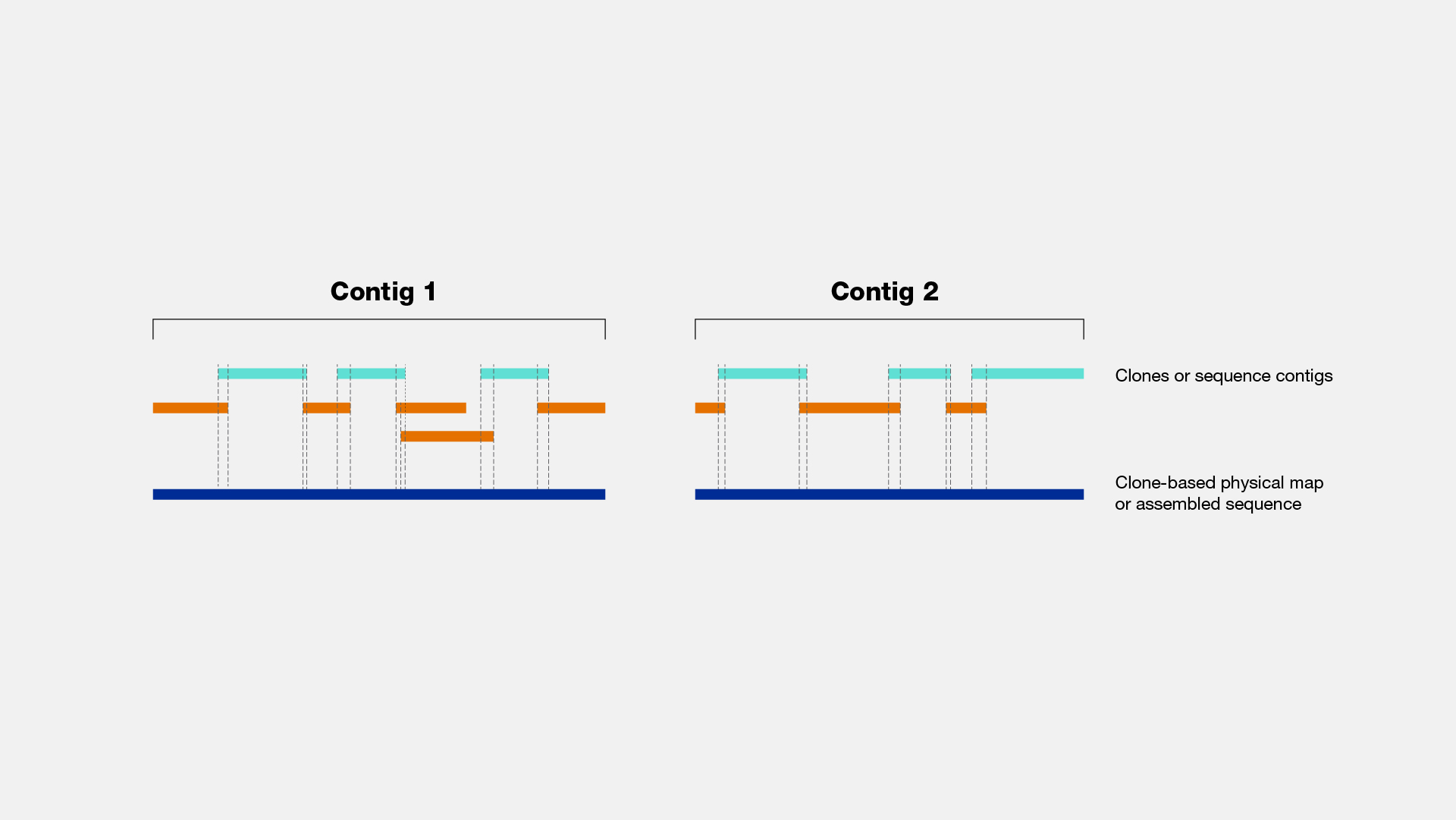Contigs
In the context of genome assembly, a contig (derived from the word “contiguous”) is a set of DNA segments or sequences that overlap in a way that provides a contiguous representation of a genomic region.
The process of generating an assembly involves the isolation of genomic DNA from a biological sample and fragmentation of DNA into small pieces that are then sequenced individually. Once the sequences of these small pieces, called reads, are obtained, researchers assemble these like tiny pieces of a giant puzzle into progressively larger contiguous sequence pieces, which are called contigs. This approach is termed Whole Genome Shotgun (WGS) sequencing.
Contigs are the first level in the hierarchy of a genomic assembly. The next step is to build scaffolds (supercontigs). To build a scaffold, researchers place several contigs in the correct order and orientation.
Therefore, contigs can refer both to overlapping DNA sequences and to overlapping physical segments. They play a crucial role in reconstructing the original DNA sequence of a chromosome or a region of a chromosome.
